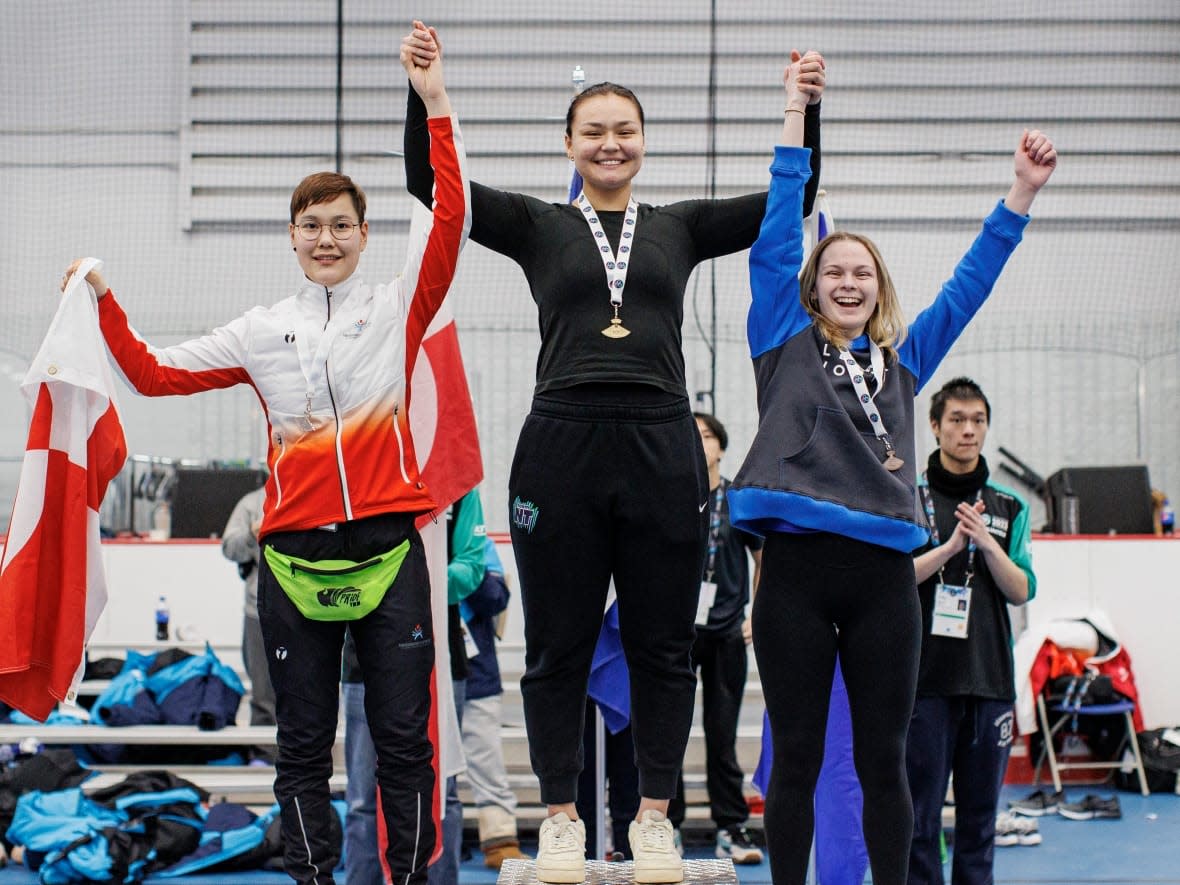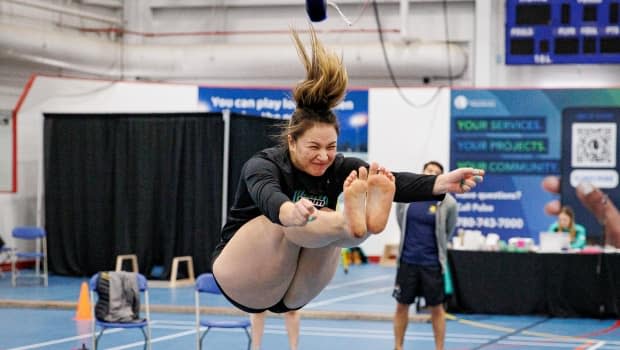5 years in the making, the 2023 Arctic Winter Games were well worth the wait

When the long five-year wait was over, and the participants of the Arctic Winter Games were finally able to gather, the magic of the event took hold of the Wood Buffalo, Alta., region.
Not since 2018 had the Arctic Winter Games taken place; the pandemic like so many other events pushing back these Games.
From the very beginning it became apparent that this was going to be a powerful experience for all those involved.
On a frigid Sunday evening, upwards of 1,800 participants from eight contingents and thousands of volunteers and fans watched the torch be brought into the stadium on a dog sled.
It was a spell-binding scene as Elder and residential school survivor Lina Gallup lit the cauldron to officially begin the competition.
The party was just getting started.
WATCH | CBC Sports' Devin Heroux highlights heartwarming moments from 2023 AWG:
The slogan for these Games was "Time to Shine" and participants for a week did exactly that. In bone-chilling temperatures they took to venues all across the region competing in traditional sports.
With steam rising into the air with each breath, competitors took part in the Dene sport of snowsnake.
The concept of the game is to throw a spear-like object over a flat and contained surface of snow. The participant who throws it the farthest distance wins the event.
"Just before I went to throw, I grabbed a handkerchief, and I really looked at it," said Alberta North athlete Kailen Marten.
"I looked at the sky and was looking at my ancestors and past people I loved to show them respect and that I'm doing it for them."

Drums beat inside the main complex, keeping rhythm for the Dene hand game as fans watched on.
Athletes soared majestically into the air while competing in traditional Arctic sports. Northwest Territories teammates Veronica McDonald and Danica Taylor wowed spectators as they catapulted themselves into the air while competing in the two-foot high kick.
Of course they were all competing for Ulus, a traditional knife used by Inuit women, that inspired the medals for the Games starting in 1970.
WATCH | Teammates share women's two-foot high kick podium:
McDonald captured gold while Taylor, who has watched McDonald compete for years and considers her an idol, won silver.
"She's been my role model for probably like three years now. She's always been the best person to look up to," Taylor said, fighting back tears.
"I'm so lucky to be competing beside her."
McDonald was equally emotional as she watched the next generation of athletes rise up in competition.
"I taught her since she was so young so just seeing her hard work pay off is truly a beautiful thing," she said.

There were so many compelling examples of how the Fort McMurray community wrapped its arms around the Games, making sure all visitors felt right at home.
Like the story of Bradley Bartlett for the Northwest Territories hockey team, who showed up at the biggest sporting event of his life — but his equipment didn't.
That's when Terry Connors from the local Alberta Junior Hockey League team stepped into action, providing Bartlett a full set of gear.
"There were a lot of people in the background trying to help me out," Bartlett said. "I was a stranger to them and they took me in to help me get out there and play hockey."
Community, teamwork, perseverance
If there was one photo that perfectly captures what these Games are about it was of two snowshoe athletes holding hands as they made their way to the finish.
Jessica Whalen, 14, of Alberta North and Elisapee Adams, 26, of Nunavik, so brilliantly showed everyone what the joy of sport is all about — community, teamwork and perseverance.
In some instances athletes put their bodies on the line, showing off their strength, agility and grit.
The knuckle hop is a gruelling event where athletes glide across the floor only using their knuckles and toes while bouncing in a push-up like plank position.
WATCH | Kyle Worl, Chris Stipdonk chase knuckle hop history at AWG:
Chris Stipdonk of Northwest Territories nearly broke the Arctic Games record of 191 feet, coming up just three feet short of that mark. At 37 years old he's the oldest traditional sport competitor at the Games.
"I want to make sure this sport continues to grow and evolve. I came up a little bit short. I couldn't have gone any further. I don't really have any regrets," he said.
His knuckles were bruised and bloody, wounds of competition serving as a souvenir of these Games and a symbol of respect to those who came before him.
There was a call to action too: reconciliation through sport.
During the week a powerful exhibit in the main complex was front and centre honouring and remembering murdered and missing Indigenous women.
"My people need to feel safe. My people need to know that they will be treated equally," said Stephanie Harpe, an international grassroots activist.
When it finally came time to put out the cauldron ending another edition of the Games there were countless lives undeniably changed in Treaty 8 Territory, the ancestral land of the Cree, Dene and Métis people.
This was an Arctic Winter Games five years in the making, definitely worth the wait.
WATCH | Message behind the 'Honour and Remembrance' exhibit at 2023 AWG:

